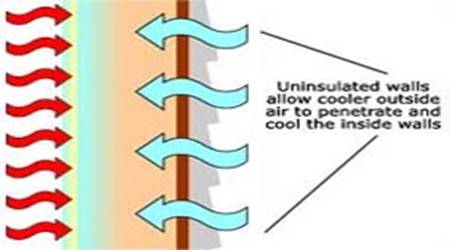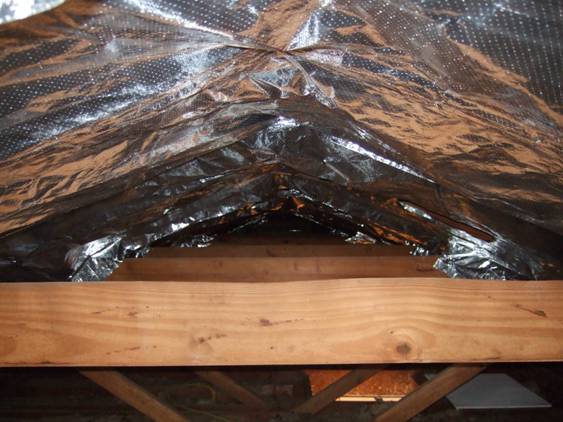Home Insulation Q&A


Resolve All your Insulation Dilemmas
When even only considering installing home insulation and moreover installing it yourself, you probably have a lot of questions on the insulation material, preparation and installation work, the effectiveness and overall results of insulation, how it works and how will it protect your home from abrupt weather changes etc. Although most of these question you can find answers to via the Internet or by contacting an expert i.e. insulation manufacturer or professional installers but they are usually dispersed through a variety of different sources, making the information incomplete and not as available. Since a number of our clients have approached us with somewhat similar questions on insulation basics, we herewith deliver a home insulation Q & A for your better understanding and knowledge.
Q: How does insulation work, how it affects heat transfer and what about insulation R value?
A: All these home insulation questions are related to one another and basically derive from the same grounds i.e. just how insulation helps you regulate your home’s temperature and keeps the structural elements protected from the influence of the weather. Basically, your home looses heat through different ways of heat movement and transfer from one material to another or one element of the building envelope to another. This is how heat transfer works, it travels through your home, making it colder or warmer, depending on the season, building and insulation material in question. Insulation is there to prevent heat transfer through its R value which shows the ability of a certain material to prevent heat loss/gain that is the level of insulation thermal resistance. It depends not only on the material’s R value but also the type of heat transfer (through conduction, convection and radiation) since different types of insulation materials will act differently when facing different types of heat transfer. Some insulation materials are especially designed to prevent radiant heat transfer, such as radiant barriers and reflective foils, which are most often used in areas that are subject to this type of heat transfer, such as your roof or loft, while others are better in preventing or minimizing conductive or convective heat transfer, which is more common for walls or floors within your home. This means that the higher the R value of an insulation material, the greater the thermal resistance and better performance in reducing heat transfer. However, please note that the overall capacity of a structural element to affect heat transfer will depend not only on the installed insulation but also other materials used in construction, whereas the overall R value of an element in question is gained by summing all the individual R values of each material.

Q: How to determine is there any insulation installed and how much (more) insulation do I need?
A: This is another common home insulation question. Namely, installing insulation can be somewhat expensive, why people will always try to find a way to decrease their insulation costs, and what a better way than to just upgrade the existing insulation instead of starting from the scratch. This will include thorough inspection of your home in order of determining is there any insulation already installed. The process will depend on the structural element you are considering insulating, but let’s consider an example of adding wall insulation. Here, you can turn the electricity off and simply remove the electrical outlets to determine if there is any insulation placed behind the wall (usually some fibre insulation). Once you have determined that you already have insulation added, you should determine the state it is in and just how much insulation is there. Please note that if insulation is in a bad state, we would still advise that you remove and replace the insulation. If insulation material is in a good condition, then you can simply add another layer of the chosen material and improve your home’s insulation. What can help you in determining just how much insulation you need is the applicable Building Regulations that prescribe the levels of insulation in the residential properties in the UK that should give the optimal result.
Q: Is insulation installation method important, should I hire a professional or install insulation myself?
A: Now, although a lot of people think that the most important question when adding insulation is which insulation material to go for, there is another thing that should never be forgotten and it refers to the very installation method. This is why you should only install materials that you are in familiar with or you have already installed. If the chosen insulation material requires special installation techniques or specialized equipment, it may be the perfect opportunity to hire a professional for the job. If you have decided to do the job yourself, it is very important to follow some common guidelines that can generally be applied when adding home insulation. For example, fibrous materials (such as glass or rock wool) must not be compressed, since this will decrease their effectiveness. Then, it is very important to create a continuous layer of insulation throughout the structural element, with no interruptions or gaps in the insulation, since some studies have shown that this can reduce the effectiveness of the installed insulation for more than 30%.

Q: What to do when, even upon installing insulation, my home is still too warm/cold?
A: When answering this question on home insulation, it is very important to understand that insulation itself is often under the influence of some other factors that greatly affect its effectiveness. There is a number of different reasons for your insulation not providing the level of protection it is suppose to. First of all, you may have chosen an inadequate insulation material or you have chosen the wrong area to insulate. For example, your home may be located in such a climate region or the building envelope may be in such bad shape that traditional and most common insulation materials are just not enough. Well, in this case you need to consider some more efficient (also more expensive) alternatives, such as sophisticated external wall insulation systems. On the other hand, you may also have chosen the wrong insulation material, for example you have serious moisture and damp issues and you have chosen a material that is not tolerant to these influences and has degraded over the years, thus not working as good as it should be. Also, there may be some other factors, affecting the performance of the entire insulation system, such as draughts, broken or damaged structural elements, no airtightness of the structure etc. This means that you will have to consider undertaking some additional work or applying some additional measures that will only upgrade and work well with your home’s insulation (such as adding a vapour barrier, upgrading your windows, insulating your pipes and ductwork etc).
Insulation Shop offers a wide range of insulation products to fit all your needs and your budget. Send your quote enquiries to info@insulationshop.co or order directly from our insulation webshop.



































































































































